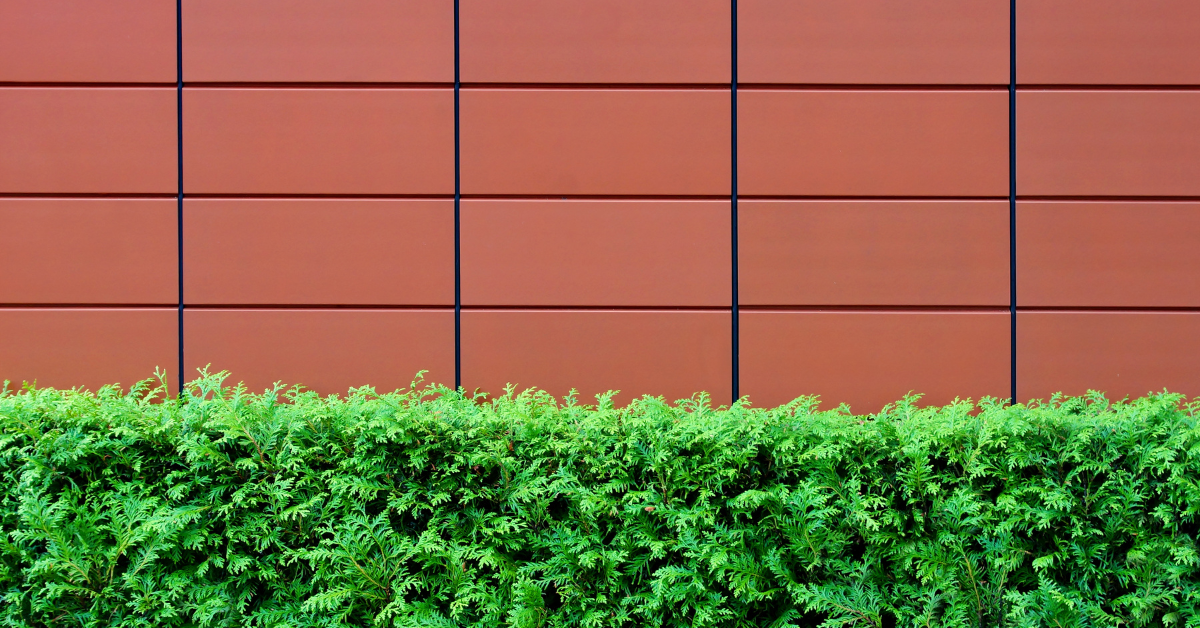Thoughtful façade design plays a crucial role in producing high performing buildings; helping to not only present an aesthetically pleasing project, but to also manage condensation, prevent water penetration, control thermal movements, and even resist the spread of fire on the exterior of buildings.
In today’s market, Architects and Designers are given extensive design flexibility with a variety of cladding materials available, including aluminium, steel, timber alternatives, fibre cement, terracotta and zinc. However, in a world where energy, environmental, and financial challenges cannot be ignored, the traditional terracotta makes perfect sense for construction purposes.
The demands of the past two years have forced us to find a sense of calmness and comfort in our home environment, which could partially explain why we are seeing a significant increase in the use of natural and earthy construction materials.
“By using more untreated and natural materials, we strive to build links that connect us physically and emotionally, rather than just digitally to our world.”
What could be more natural than terracotta? It is baked earth after all. The warm and rich ambiance of terracotta will not only provide your project with a sense of conviviality but will also act as a protective shield and provide the building with an unprecedented level of stability and energy efficiency.
Modern building products are tapping into a renewed interest in energy-saving, durable, low-maintenance materials with recyclable components and an organic appearance. Cladding systems such as Fairview’s Clayton, a terracotta ventilated façade system made from natural and recycled clay tiles and panels, is an example of what is finding its way to residential and commercial exteriors.
When combined with elements like brick, stone, glass, or wood, and contrasted with hard textures like concrete and steel, Clayton adds an elegant and timeless look to exterior façades. Enriching new and modern buildings, the Clayton façade also imparts an exclusive contemporary character to refurbished properties.
Baguettes or sunshades are also available in the Clayton range and are a popular choice for solar protection, to act as an effective ventilation screen, to provide security against access, or to simply add an eye-catching decorative element to your design.
So, why should you install Clayton?
Excellent Performance of Terracotta Cladding
|
|
Durable and Long-lasting
|
- The firing of Terracotta during the manufacturing process vitrifies the colour into the surface of the panel. This process results in Terracotta being resistant to ultraviolet radiation and corrosion – it does not fade in sunlight or from years of acidic rain.
- Weather-resistant and low absorption properties.
|
|
Energy Savings and Thermal Benefits
|
- Reduces the level of sound absorption.
- Outstanding thermal installation which helps to mitigate the heat-island upshot of larger buildings, and lower overall energy consumption.
- Terracotta is best at storing heat energy during the day and releasing it gradually at night.
|
|
Low Maintenance Cost
|
- Lower installation costs – fast and easy to install.
- The terracotta rainscreen cladding system does not use grout or sealants, therefore, reducing the need to maintain the joints.
- Life expectancy far exceeds that of other cladding materials.
- The surface of terracotta cladding is not likely to be dusty. It can be easily power washed every 2-3 years (or over even a longer period) and afterwards, it looks as if it were the original.
- Damaged tiles can be replaced individually without having to disturb adjacent tiles.
|
|
Safe, Eco-friendly and Sustainable
|
- Rated Class A Fireproof – During the manufacturing process, Terracotta panels are fired at over 1000°C for days on end. This seals the Terracotta and makes it almost fireproof. For this reason, the terracotta construction materials can withstand large, intense fires for longer than almost any other building material.
- Environmentally friendly building material which can be easily recycled, repurposed, or reduced to debris.
- Old Terracotta tiles can be smashed and put back into the ground or reused to make new Terracotta panels.
- Terracotta cladding is made 100% of clay, which is environmentally friendly and harmless to humans and the environment.
|
Multifarious Design Elements of Terracotta Cladding
|
| Colours |
- Rich, warm, and earth tone colors can be produced by extreme heat in the kilns with no effect of the sun.
- By blending different types of clay materials and precisely controlling the firing temperature in the kiln, it is possible to produce terracotta cladding with a rich variety of colors.
- A unique feature of Terracotta is the result of the firing process during manufacturing which essentially locks the colour of the panel into the terracotta for the life of the product.
|
| Textures and Finishes |
- Available in different textures, this allows designers to play and experiment with the shadow effects on the structure.
- Terracotta cladding can be processed with a wide variety of surface texture treatments – including natural, sandblasted, wirestruck, corrugated, grooved and linear.
|
| Shapes and Profiles |
- Terracotta cladding is no longer confined to a flat shape.
- Cladding can be installed both horizontally or vertically.
- According to different facade structures, Clayton can offer different cross-sections and flexible geometric terracotta cladding products.
|
CONTACT US to find out how Clayton can contribute to your upcoming project!



